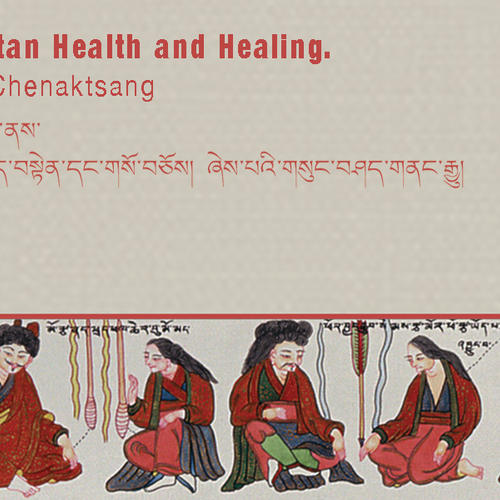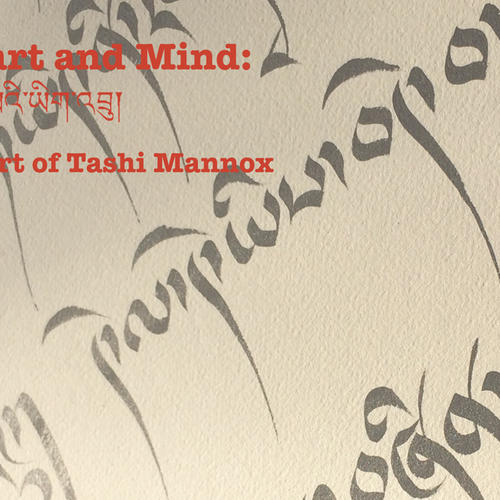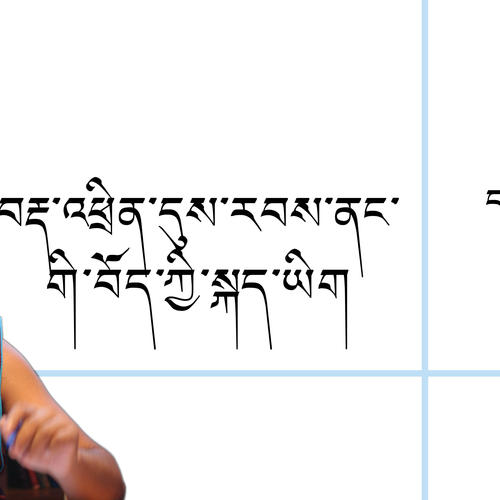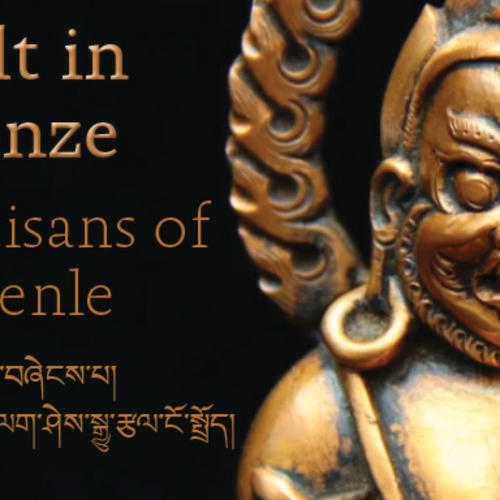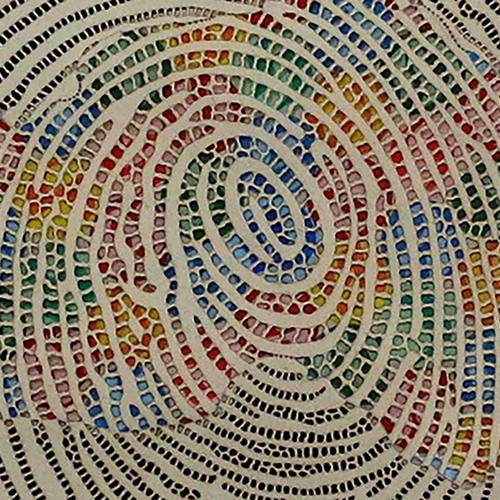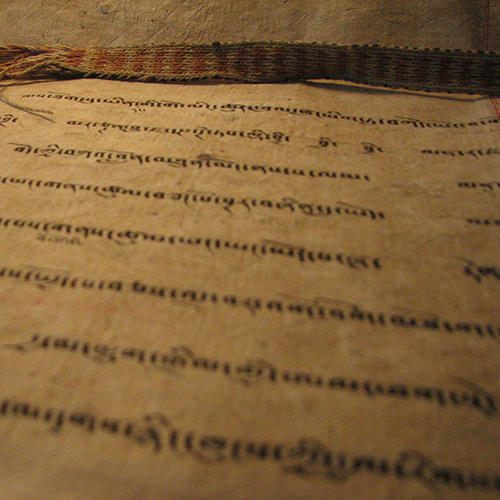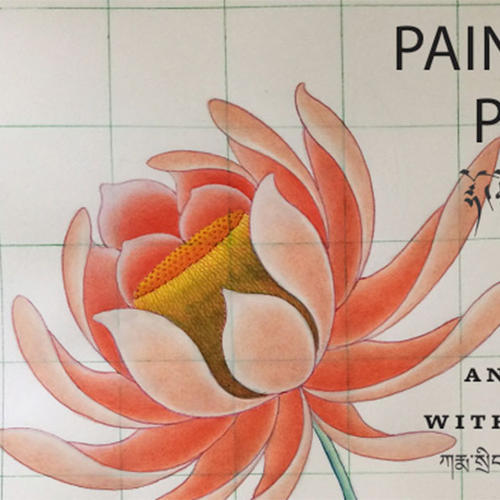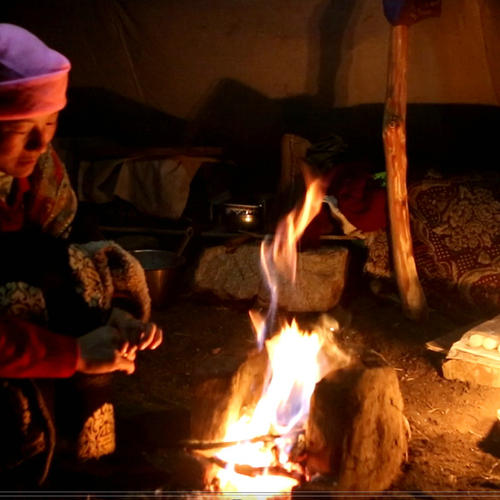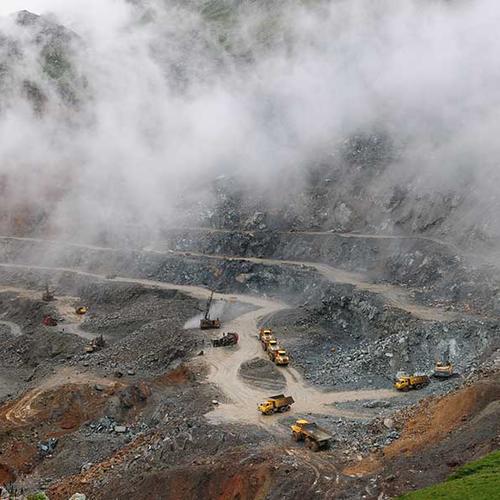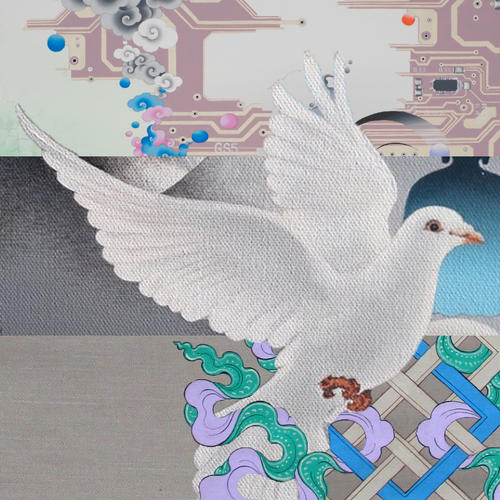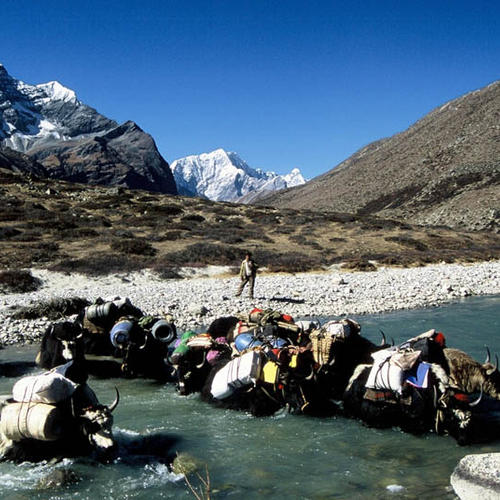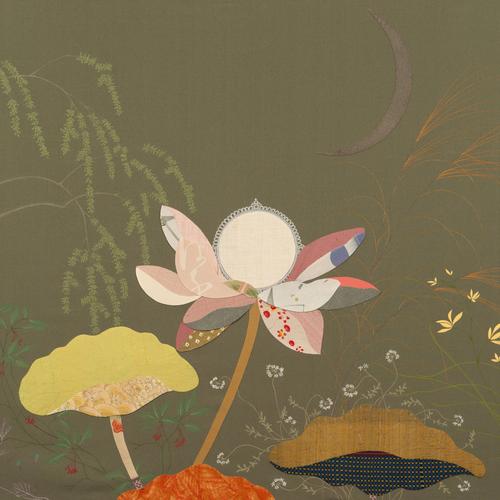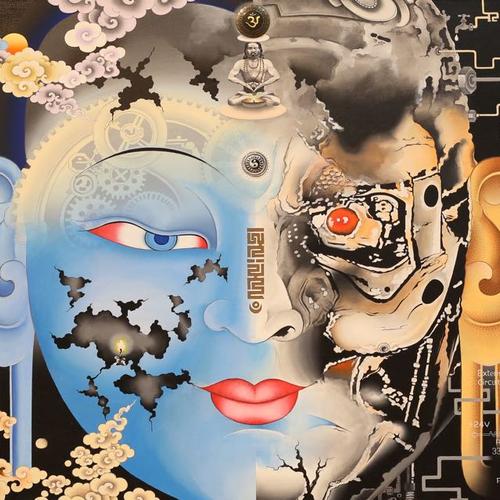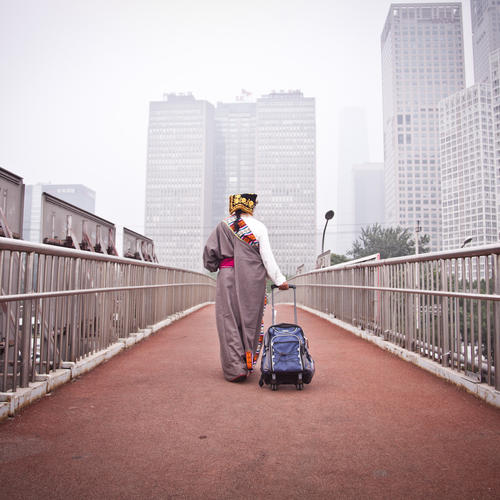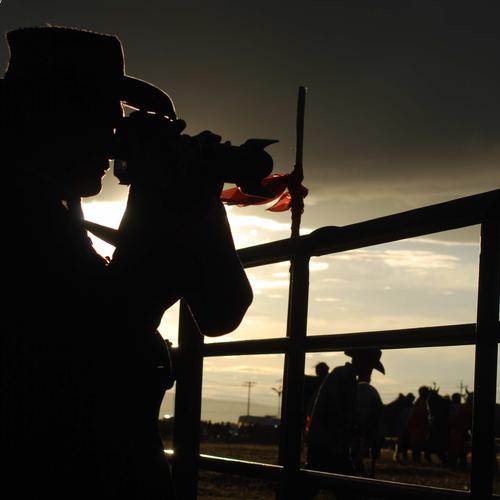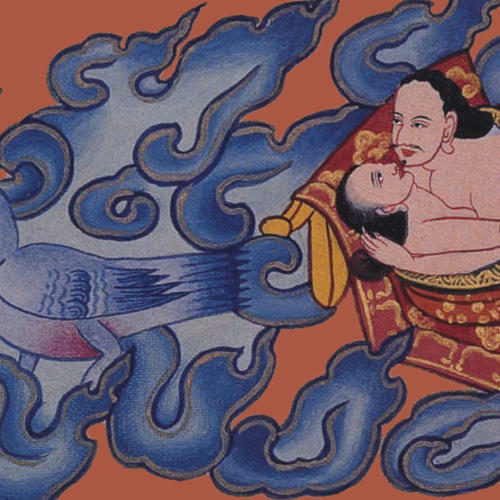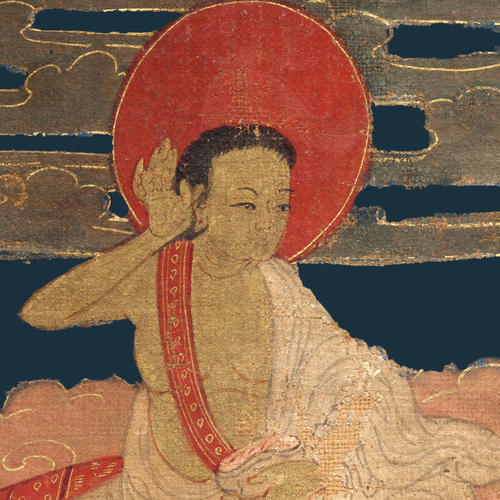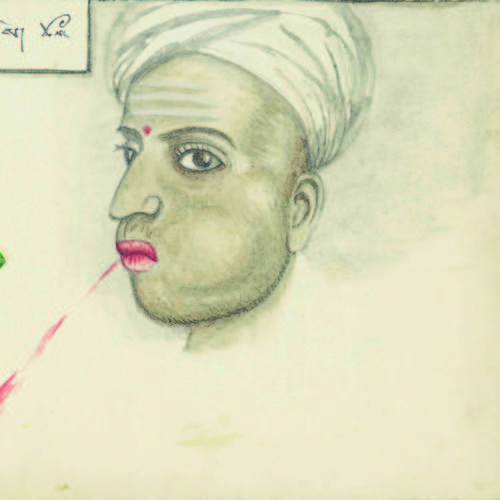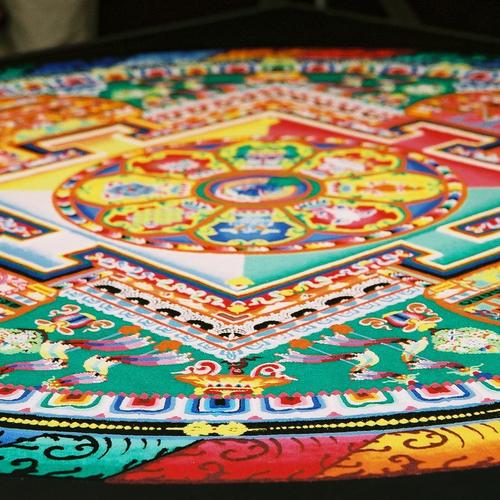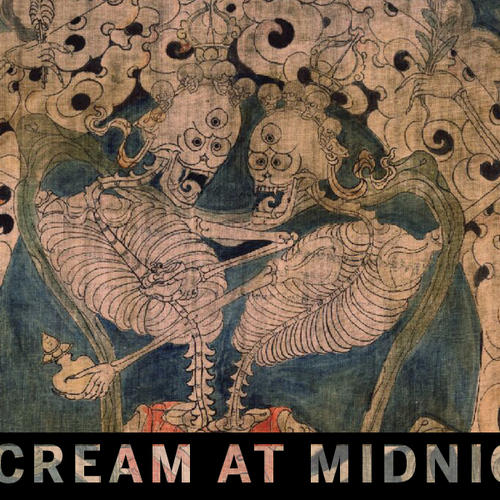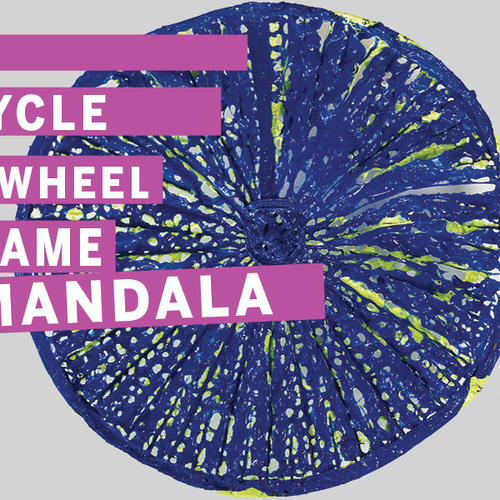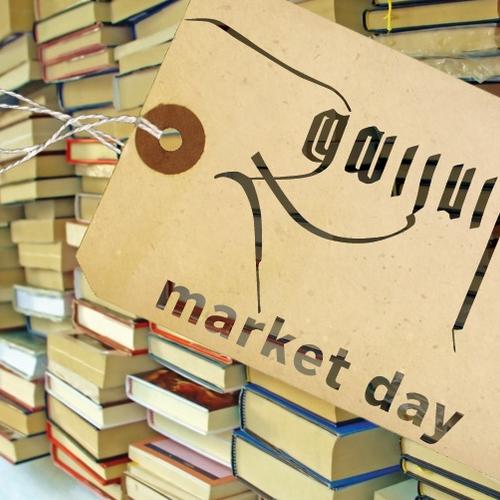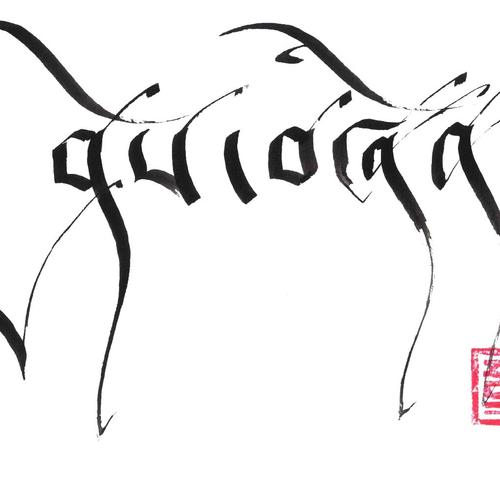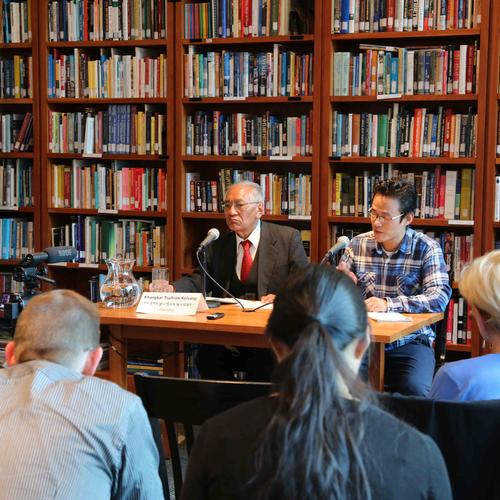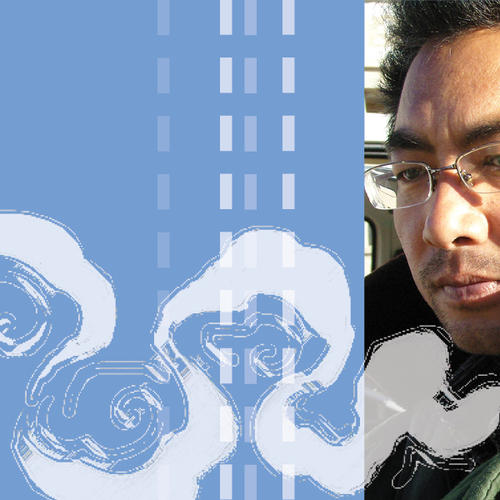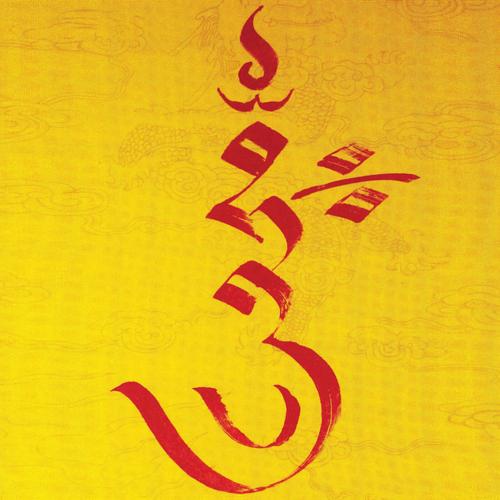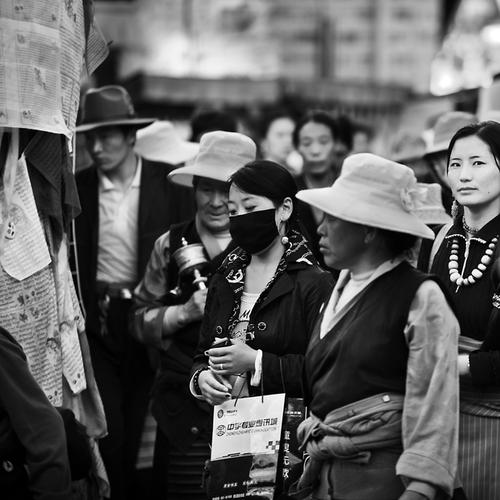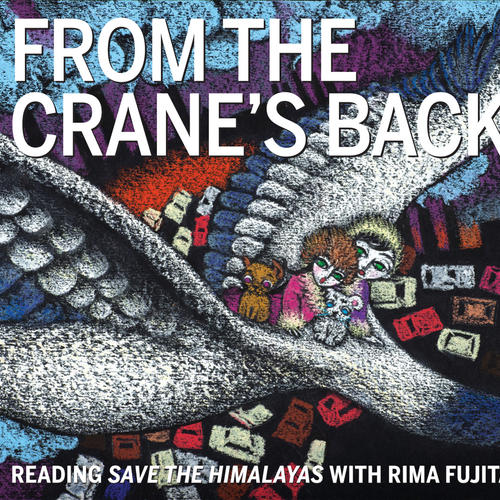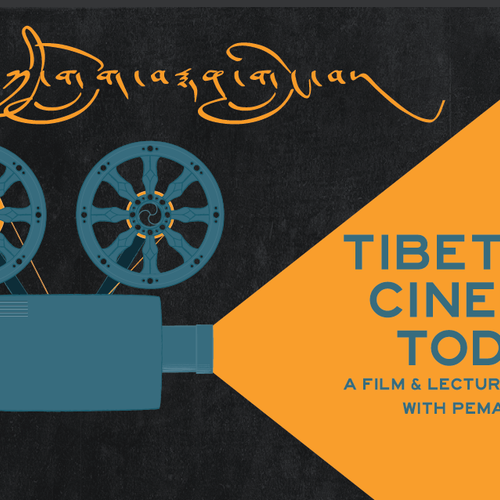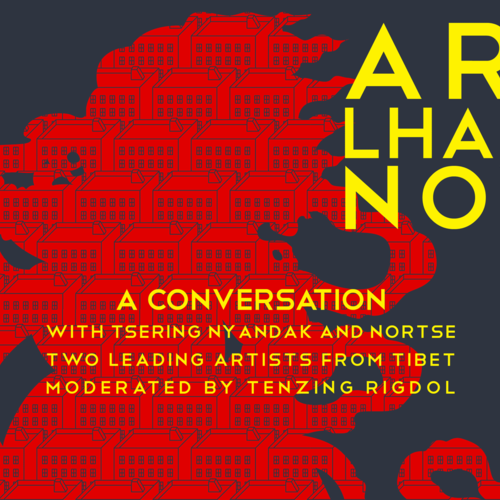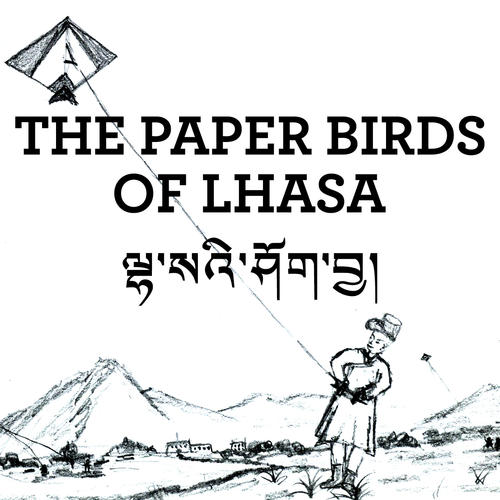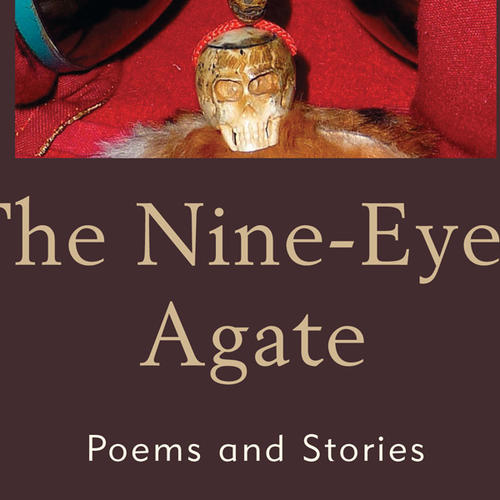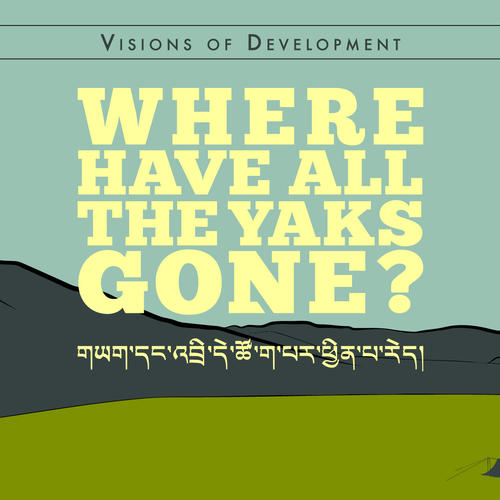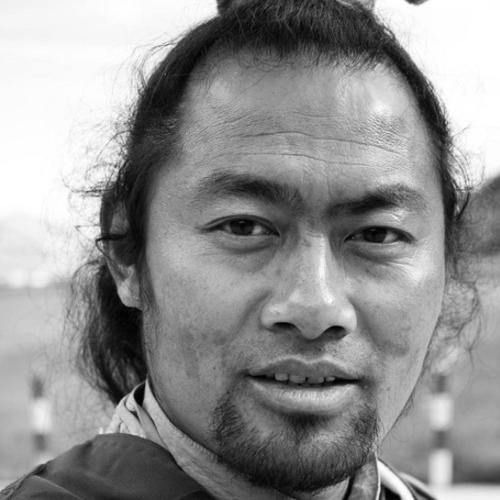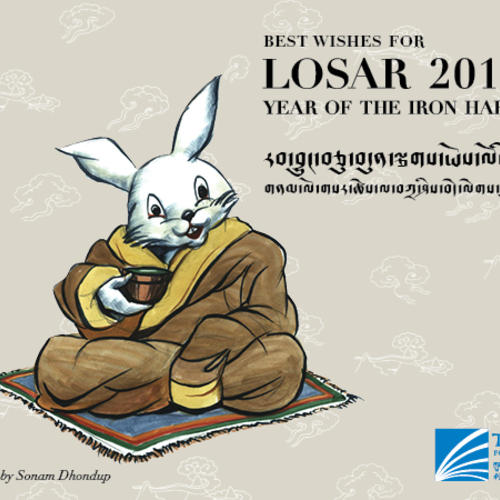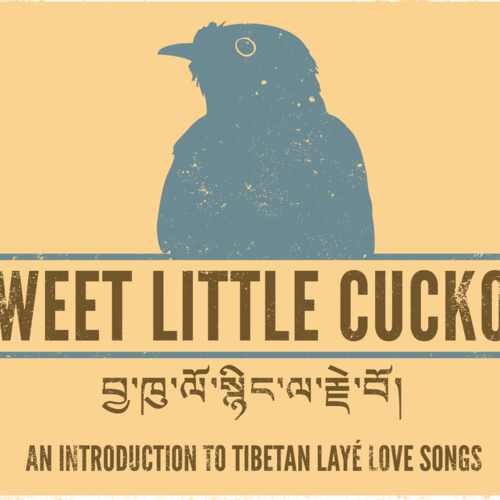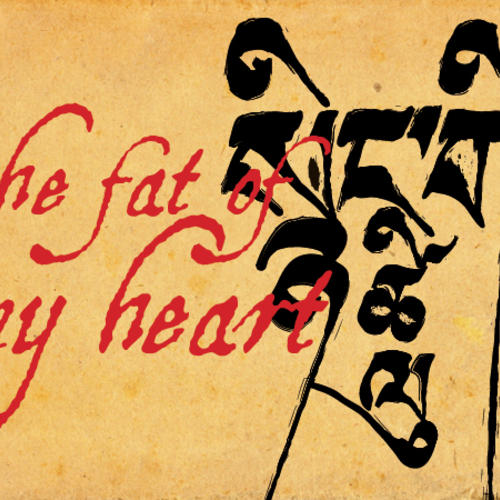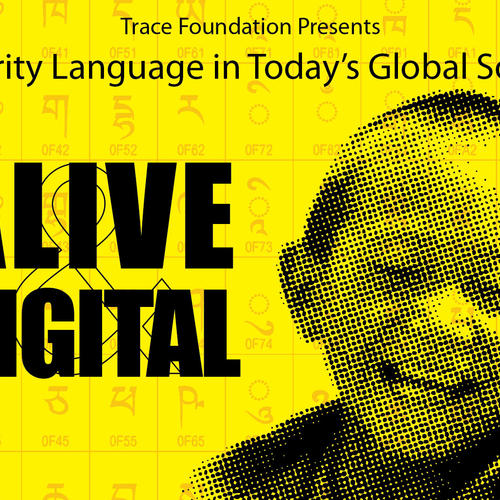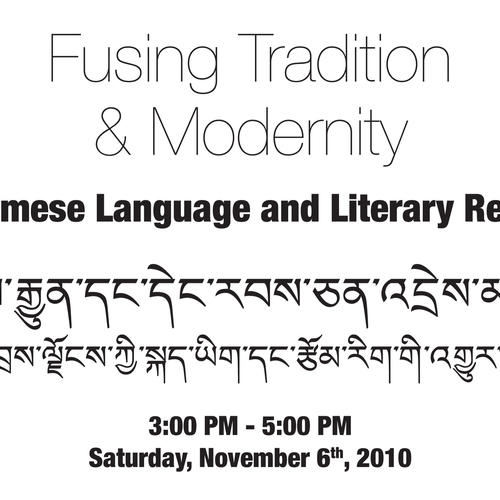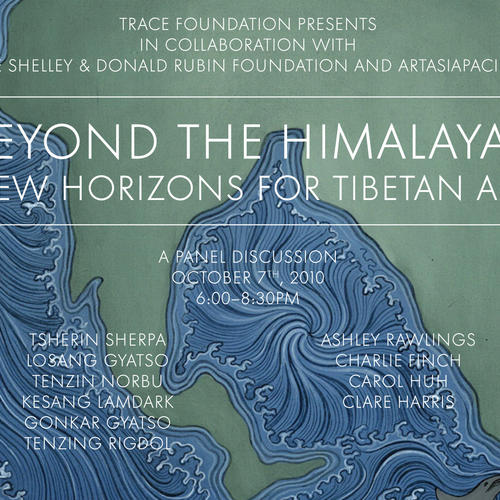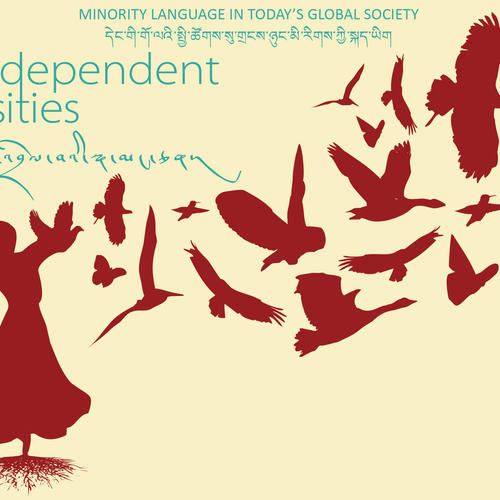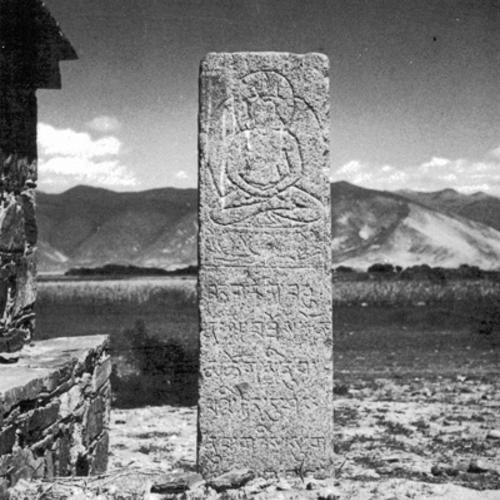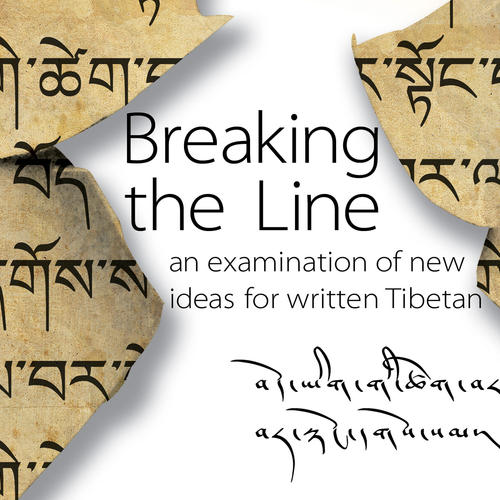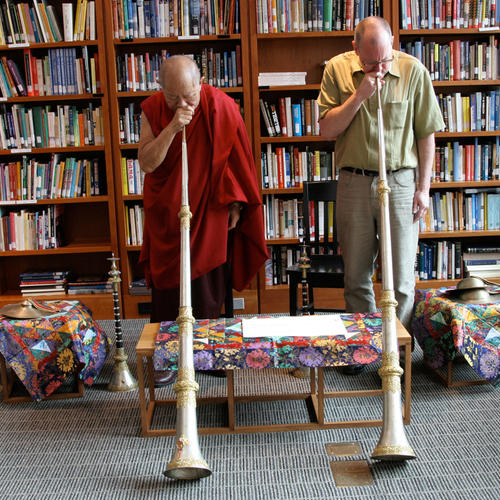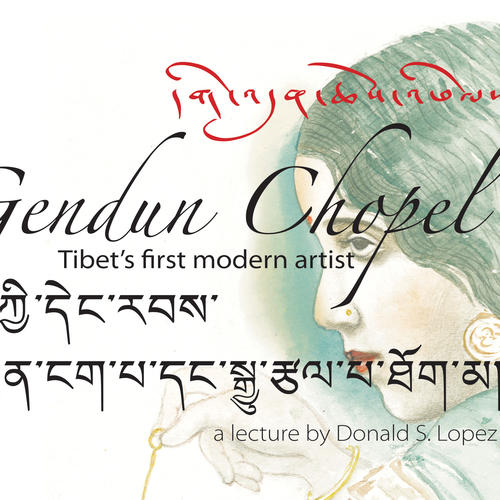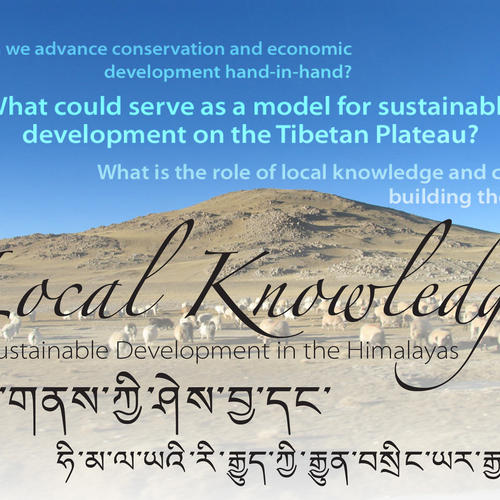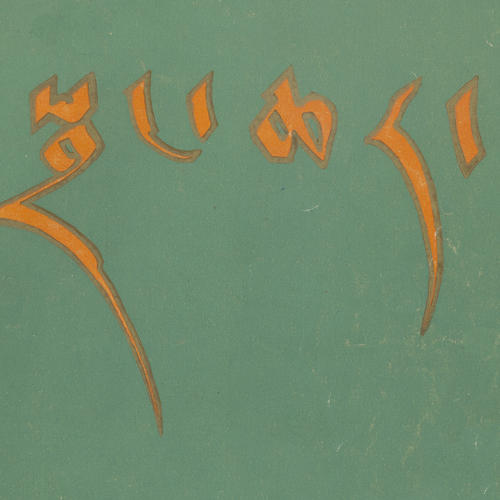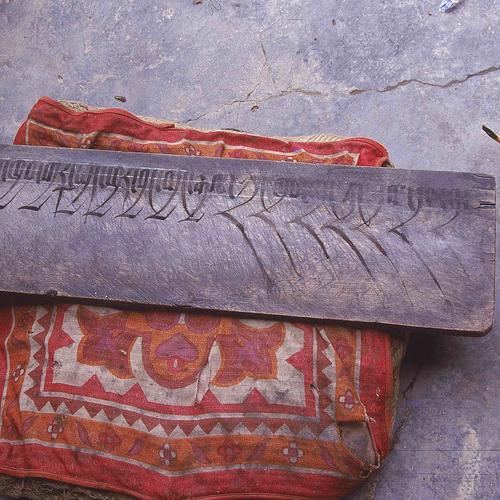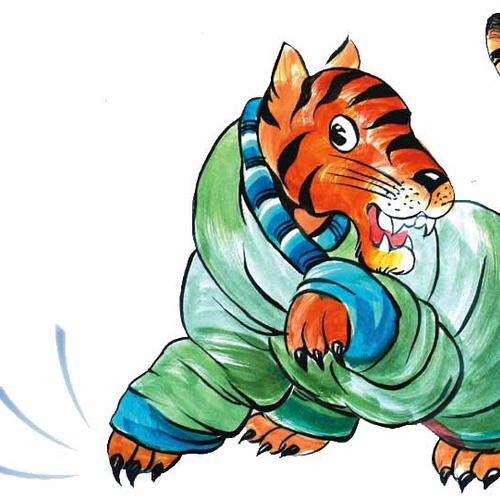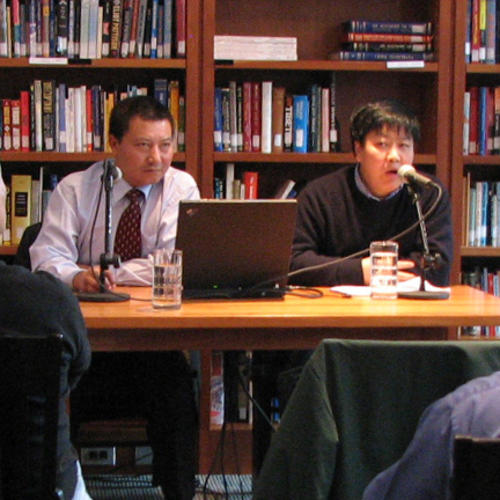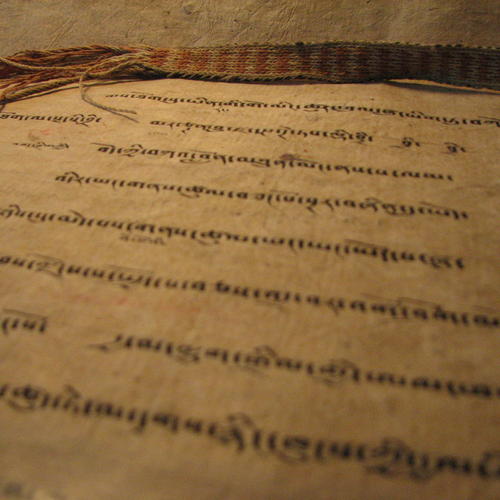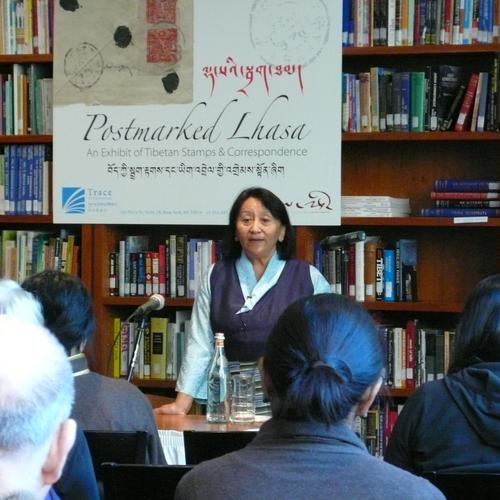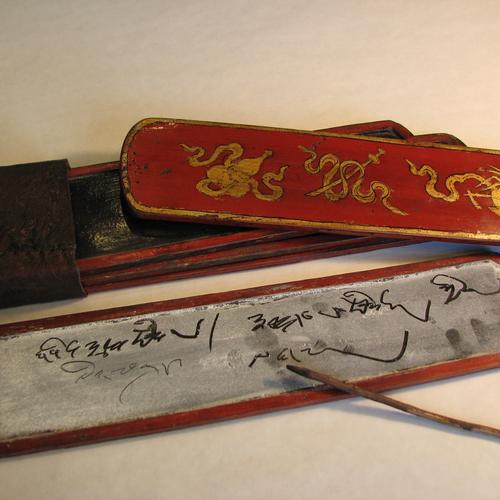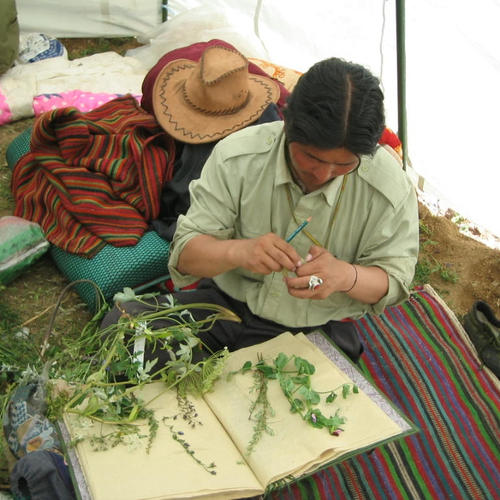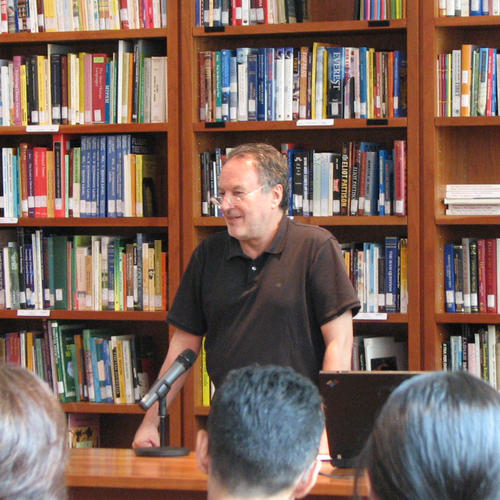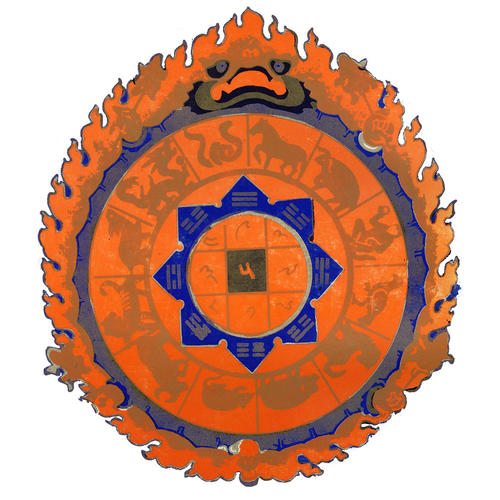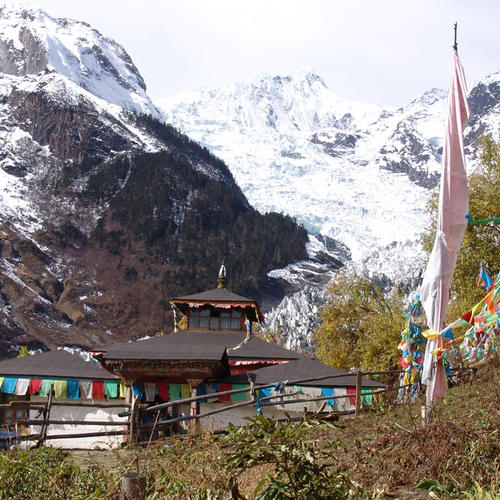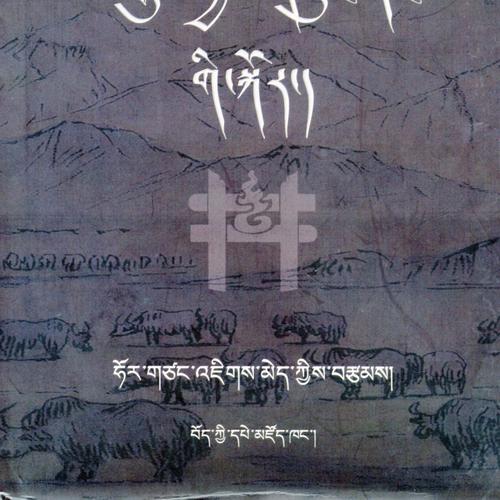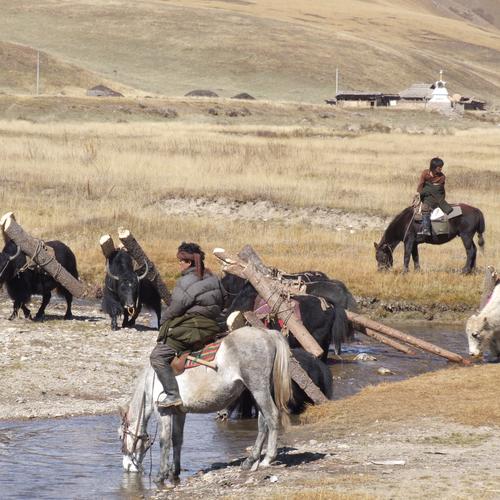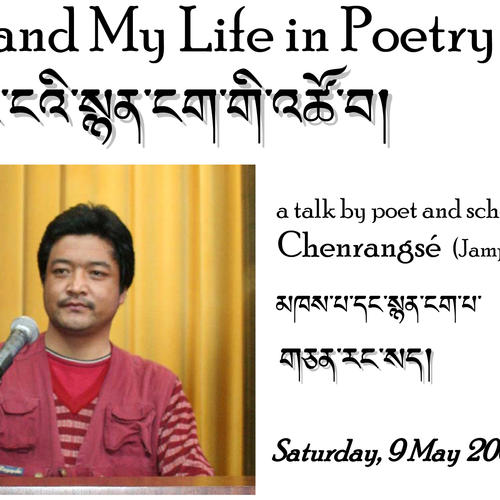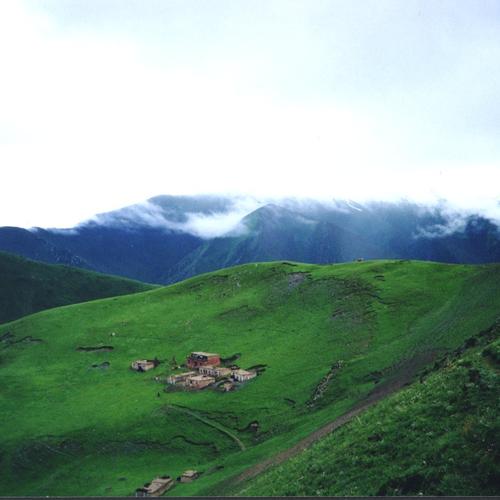Traditional Tibetan Medicine, known as Sowa Rigpa, the ‘Science of Healing’, is one of the oldest healing traditions in existence, yet it remains fully alive and intact today. A truly holistic system of medicine that approaches the health of an individual at the levels of the physical body, energy, and mind, it has the fourfold aim of preventing illness, curing illness, extending life, and cultivating happiness.
read moreYou are here
Past Events
- 6:30pm
Join us for a special evening with one of the world’s foremost contemporary calligraphy artists Tashi Mannox. Tashi is not only a master of various Tibetan traditional scripts, but has innovated his technique and concept to develop his own unique artistic style while remaining rooted to the integrity of tradition. Having trained and studied with the great teachers of Tibetan calligraphy as a young monk himself, Tashi furthered his knowledge of Tibetan script, decoration, and design by traveling through India, Nepal and Tibet.
read more- Opening Reception: 6:30-8:30 pm
- General Hours: 11 am-7 pm
From appliquè to embroidery, watercolor to collage, follow the journey of different textiles and how they are transformed in the hands of an artist.
Discover the interconnection between art and fabrics through the work of Michela Martello, Livia Liverani and Nyima Dhondup.
read more- 6:30-8:30 pm
Join us for a talk by Geshe Lobsang Monlam on the future of technology as it relates to the Tibetan language. A monk and scholar, Monlam is famous for his development of Tibetan-language computer programs and is the most-well known computer developer amongst Tibetans. A self-taught programmer, he has worked on projects that range from font creation to the first Tibetan-language digital dictionary.
read more- Thursday, October 13, 2016
The first exhibition of Tibetan thangka and appliqué masters Terris and Leslie Nguyen Temple
Tibetan thangka and appliqué artists Terris and Leslie Nguyen Temple join us for two weeks in October, exploring their work and passion for the natural world through an inaugural exhibition, workshops, and screenings of a captivating documentary about the creation of giant silk appliqué thangkas in Tibet.
read more- August 23rd, 7-9 PM
Join us on Tuesday, August 23rd for a rare opportunity to meet the artists behind a unique tradition. The Khyenle bronze workers of Derge are the inheritors of a traditional Tibetan art--metalwork based on wax and sand-casting--that has continued through five generations. With hand-crafted works that range from statues to jewelry, Khyenle (the name of both the company and the bronzework style) emphasizes the need for creativity that operates on a spiritual level as well as an aesthetic one.
read more- 6:30-8:30 PM
A Discussion on Art
We are delighted to host Tülku Jamyang as he reflects on the inspiration behind his intricate incense-burned artwork. A reincarnation and artist, “TJ” strives to reproduce his meditative introspection in his artwork, and the result is a style that is passionate and inquisitive. His artistic method involves rice paper and incense, burning intricate holes in a pointillist style to create a vivid, detailed work.
read more- Tuesday, May 17, 7:00-9:00 p.m.
Join us for a special evening with Khenpo Tsultrim Lodroe, abbot of Larung Gar Buddhist Institute in Kham, as he discusses his work and efforts in promoting the use of Tibetan language among his followers, nomads, and the greater Tibetan community. Among his activities in this regard, Khenpo has founded libraries and schools, and has compiled dictionaries of new “daily” vocabulary for terms that previously had no Tibetan equivalent, which has been promoted throughout the community, especially in nomadic areas.
read more- Saturday, May 7, 2:00-6:00 p.m.
Join thangka master Karma Sichoe as he teaches a class how to paint the perfect lotus using traditional mineral pigments. Learn to mix these pigments to generate vibrant colors and discover how this technique has influenced Tibetan art. Karma Sichoe’s training in both traditional and contemporary art reveals a talent for connecting historical practices to modern art applications. Finally, you’ll learn to paint a traditional lotus and leave with your own artwork that would be great to put on a wall or give to a loved one!
read more- Thursday, April 21, 2016
- 6:00 pm–8:00 pm
A nomad girl is orphaned on the eve of taking her college entrance exam. She leaves school and returns home to take care of the family’s livestock so that she might support her brother’s education. This is the story of Tsezung Lhamo.
read more- Friday, April 15
- 6:00 pm–8:00 pm
Little known to the outside world, the Land of Snows is seeing a craze for minerals as wild and desperate as the gold rush was in the United States 150 years ago. Voices of the Stone follows two entrepreneurs as they attempt to enter the mining market, and the various paths and choices they face. The film is set against the vast and majestic landscape of northern Tibet—its fauna, its herdsmen, their customs and the struggle for survival; the pilgrims and the small anecdotes of daily life—these are shown in slow motion as one of planet Earth’s ultimate primeval environments.
read more- November 8, 2015
- 1 - 3PM
During Transcending Tibet, you had a chance to see firsthand the work of more than 30 artists working with Tibetan themes. Now we're delighted to offer you the opportunity to learn from one of the masters himself, using three motifs commonly found in Tibetan art: symbols, animals, and clouds.
Join us this November for three Sunday workshops led by master painter Rabkar Wangchuk. Tickets for each session (including material fees) are available for $40, or as a set of three for $100.
read more- Saturday, September 26, 2015
- 3:00–5:00 pm
Located just forty kilometers from Nepal, the town of Nyanang (also known as Nyalam) in southern Tibet has served as a historic, important site on the cross-border trade route between Tibet and Nepal. A native of Nyanang, Rinchen Dharlo draws from his exhaustive research on Nyanang to present an introduction to the region, its historic sites, including Milarepa’s meditation cave, and its unique people, culture, and traditions.
read more- Thursday, December 4, 2014
- 6pm
In The Museum at the Roof of the World, visual anthropologist and curator Clare E. Harris explores how British and Chinese collectors and curators have historically tried to convert Tibet itself into a museum. This book, available for the first time in paperback, is a powerful account of the museums created by, for, or on behalf of Tibetans.
read more- Wednesday, November 12, 2014
- 6:30pm - 8:30pm
Join us for the second event of Transcending Tibet: A Preview, a roundtable discussion with contemporary Tibetan art scholar Leigh Miller and the artists, followed by a special extended opening of the gallery. Traveling from Nepal, Italy, Switzerland, Amsterdam, and Queens, these artists will speak on everything from their unconventional choices of materials (silkscreen appliqué collage, incense-burned rice paper, monastic robes, and much more) to negotiating Tibet's rich legacy of traditional art and a fast-changing world.
read more- Thursday, November 6, 2014
- 7pm
We've postponed the full Transcending Tibet exhibition to the Spring of 2015. But don't clear your calendar just yet. Join us this fall for a preview exhibition, a special first look at the work of some of Transcending Tibet's participating artists.
read more- Saturday, September 13, 2014
Miss Nowhere to Call Home last week at MoMA?
By popular demand, we will be screening the film at Trace Foundation. The screening will be followed by a discussion with the director, Jocelyn Ford.
read more- Wednesday, August 20, 2014
In celebration of our twentieth anniversary, join us for a roundtable with ten of the featured filmmakers, moderated by Tibetan film scholar Robert Barnett; with Assistant Curator, Department of Film, MoMA, Sally Berger and Senior Vice President of Kino Lorber Elizabeth Sheldon. The roundtable will examine everything from the current state of Tibetan film on the global stage to the ins-and-outs of life as a filmmaker today—and will be followed by an opportunity to meet the directors over cocktails.
read more- Wednesday, June 11, 2014
Join us for a talk by Dr. Nida Chenaktsang on sexuality in Tibetan medicine, and the role of sex for energy and health. Dr. Nida will also look at Buddhist views on sexuality, as well as the historical masters and texts that cover this subject, including the Kamasutra and karmamudra.
read more- Thursday, May 29, 2014
Join us as Andrew Quintman discusses his book, The Yogin and the Madman, about the fascinating relationship between Tibetan saint Milarepa and his biographer, Tsangnyön Heruka, the self-proclaimed “Madman of Western Tibet.”
read more- Thursday, May 22, 2014
Gendun Chopel: one of the most important Tibetan figures of the twentieth century, famous for his skills as a poet and infamous for his controversial views. But he was more than that: He was also a talented artist.
read more- Wednesday, February 19, 2014
We are delighted to announce our support for a project at Asia Society this month. Monks from the Drigung school of Buddhism will construct a sand mandala over the course of five days (from 11 a.m. to 6 p.m. each day), in conjunction with the opening of the Golden Visions of Densatil: A Tibetan Buddhist Monastery exhibition.
read more- Thursday, October 24, 2013
From “hungry ghosts” (yidag)—spirits with tiny throats and huge insatiable stomachs—to exorcism festivals, ghost dances, and spirit traps, Tibet lays claim to one one of the world’s richest . . . and spookiest traditions of ghosts. To showcase the richness of Tibetan ghost stories and to celebrate Halloween, we invited you to send us your scariest, most hair-raising entries for a Tibetan ghost story competition.
read more- Thursday, October 10, 2013
If you think thangka and sand mandalas are all there is to Tibetan art, think again.
read more- Saturday, September 21, 2013
In central Tibetan areas, tromdu (ཁྲོམ་དུས།) is the annual market day—a unique chance for nomads, artisans, and farmers to journey from villages across the region, pitch tents, and exchange their crafts, food, and products—sometimes for money, often for other goods.
As we make room for new books for our library, we're delighted to invite you to come out for our own tromdu. We will be giving away and selling at deep discounts:
read more- Saturday, June 22, 2013
In the age of the iPad, join us for a day free of notifications, broken screens, and outdated software by celebrating the writing arts of Tibet, with calligraphy demos and hands-on traditional paper-making. We are delighted to host international special guests Puntsok Tsering (classical and modern calligraphy), Kunsel Dawa (Bönpo scripts), Tsultrim Gyatso (sand letters), and Jim Canary (Tibetan paper-making) for what promises to be an illuminating tour through a tradition as rich as it is beautiful.
read more- Thursday, April 25, 2013
Professor Khangkar Tsultrim Kelsang visits from Kyoto to discuss the different views of Madhyamaka philosophy as presented in Tsongkhapa’s fifteenth-century classic The Great Treatise on the Stages of the Path to Enlightenment (Lam rim chen mo), and in twentieth-century scholar Gendun Chopel’s Adornment for Nagarjuna’s Thought (Klu sgrub dgongs rgyan).
Suggested donation $10. Students $5.
read more- Thursday, November 15, 2012
Join us for our last in a series of talks by acclaimed director Pema Tseden featuring a screening of his documentary film The Weatherman’s Legacy, made for Discovery Channel Asia in 2004. Filmed in Pema Tseden’s hometown, the film follows a Tibetan shaman who wants to pass down his hailstorm-stopping and rain-making skills to a son who would rather run a video-rental business in the village. Worried that his reputation in the village is slipping, the shaman’s last hope lies with his grandson, who is beginning to learn the ancient incantations.
read more- Wednesday, October 24, 2012
Back by popular demand, world-renowned Tibetan filmmaker Pema Tseden introduces his picks for the most outstanding short films by up-and-coming student filmmakers from the Tibetan Plateau. A short discussion and Q&A will follow. Suggested donation $10.
read more- Saturday, September 29, 2012
Join us in celebrating the beauty of the Tibetan written word with world-renowned artist Mipham Namgyal Rinpoche. We will explore traditional and artistic styles of Tibetan calligraphy with a talk, exhibit, and demonstrationby Rinpoche and special guests, calligrapher Phuntsok Dhumkhang and library director Pema Bhum.
read more- Thursday, May 31, 2012
Photographer Laurent Zylberman and writer Eric Meyer were the first independent journalists to travel to the Tibet Autonomous Region in the fall of 2008. Over the course of their fifteen-day trip through Lhasa, Gyantse, and Shikatse, Zylberman captured powerful images of a society in transition.
read more- Thursday, May 10, 2012
Join us for a special evening with artist Rima Fujita as we celebrate her most recent children’s book, Save the Himalayas, with a reading, exhibit, and book signing. Save the Himalayas is Rima Fujita’s sixth book and her fourth to be translated into Tibetan. It tells the story of a brother, a sister, and a baby snow leopard who learn the importance of caring for the environment on a magical journey through the Himalayas on the back of a crane.
read more- Thursday, February 2, 2012
Join us as critically-acclaimed director Pema Tseden (Silent Holy Stones, The Search, Old Dog) discusses literature and film with Tibetan language and literature professor Françoise Robin (INALCO, Paris) and Modern Tibetan Studies professor and film expert Robbie Barnett (Columbia University). This event is the first of a series talks on Tibetan films with Pema Tseden in 2012. Pema Tseden’s award-winning films have been featured in film festivals around the world, and have received acclaim for their nuanced and sensitive portrayals of contemporary life in Tibet.
read more- Monday, November 14, 2011
Eight years ago, ten artists came together to undertake an experiment. In a former Sichuanese restaurant along Lhasa’s Barkhor, they created the Gendün Chöpel Artists’ Guild and Gallery, and changed what it meant to be an artist in Tibet forever.
read more- Saturday, October 8, 2011
In Tibet, especially in the city of Lhasa, the arrival of autumn signals the beginning of kite-flying season. Enjoyed by all ages, kite flying can be a pleasant pastime or a fierce competition where flyers coat their string with crushed glass in order to cut down other kites in a kind of midair battle.
Join us as we explore this hobby enjoyed by many across the Tibetan Plateau, and learn how to make your own Tibetan kite.
read more- Saturday, June 11, 2011
Join us as we celebrate the publication of the most recent work by one of Tibet’s most influential poets, Jangbu (Dorji Tsering Chenaktsang), and catch a sneak preview of his upcoming documentary Precious Caterpillar. The Nine-Eyed Agate: Poems and Stories (Lexington, 2010) features English translations of Jangbu’s works by Dr. Heather Stoddard, of the National Institute of Oriental Languages and Cultures, Paris.
read more- Friday, May 20, 2011
The grasslands are changing. Across the Tibetan Plateau, desertification, biodiversity loss, and ecological relocations are dramatically altering the landscape and reshaping Tibetan society. What’s happening on the grasslands today poses unprecedented challenges to Tibetan communities and will have a profound impact on them far into the future.
Join us on Friday and Saturday, May 20 and 21, for the first event in our second lecture series, Visions of Development, as we explore the state of the plateau’s grasslands, and it’s bearing upon the future of Tibetan communities.
read more- Wednesday, April 20, 2011
Scholar Humchen Chenaktsang introduces us to the world of the the ngakpa ("yogin" in Sanskrit), a lay practitioner of Tantric Buddhism. In the eighth century, Padmasambhava established the ngakpa tradition in Tibet so that lay people could receive spiritual and cultural education. Through study and practice, both men and women practitioners can attain the highest spiritual realization and develop powerful skills, such as the ability to make divinations, perform tantric rituals, and even control the weather.
read more- Friday, March 25, 2011
Join us as we celebrate Losar 2011 with an evening of traditional Tibetan music and food and an exhibition of New Year's offerings from across the Plateau.
read more- Saturday, March 12, 2011
Join us for an introduction to layé, a captivating genre of Tibetan song in which singers extemporize lyrics that are almost always about love! In an illustrated talk, ethnomusicologist Yin Zhuoma of the Central Conservatory of Music, Beijing, discusses the forms and styles of layé, as well as the unique spectacle of the large-scale layé performances at the annual June Festival in Rebkong.
read more- Friday, February 11, 2011
Celebrate the month of love at The Fat of My Heart at Trace Foundation. Join us Friday, February 11, for an exploration of expressions of love and desire in Tibetan literature, historical documents, and song. Special guests will present the sweetest of love stories, real and fictional, songs of love and heartbreak, and love letters and the rules for their composition. The evening will culminate in a love letter writing competition (please see rules for submission below) where the audience will vote for their favorite.
read more- Saturday, November 20, 2010
In this age of digitalization, technology is playing an increasingly important role in both the preservation and sustainability of minority languages. From blogs and video sharing to text messaging and social media, powerful technologies are shaping the future of minority languages. This movement is stretching the boundaries of minority language communities beyond “geographical place” into a “digital place” bridging together communities from all regions of the world.
read more- Saturday, November 6, 2010
In his talk, the library’s first to focus on Sikkim, scholar Kalzang Bhutia will provide an overview of the work and philosophy of exponents of Sikkimese language and literary reform over the past thirty years. The talk will particularly focus on seminal figures such as Pema Rinzin Tagchungdarpa, Tashi Pelkyi Penpo, Norden Tsering, and Bhaichung Tsichudarpo, and on how they have reinvigorated Sikkimese language, as well as adapted traditional approaches to Sikkimese education, during the process of developing Sikkimese language in the Indian state education system.
read more- Thursday, October 7, 2010
For centuries, in the shadow of the Himalayas, the strict traditions of classical Tibetan art were passed in an unbroken lineage from master to student. Beginning in the nineteenth century, those traditions came increasingly into contact with new styles and influences from Asia and the West, and the new media and challenges of Western modernity. In the last decade contemporary Tibetan art has flowered around the globe.
read more- Friday, September 24, 2010
Each language is a unique key to a community’s worldview and culture and plays a central role in transmitting historically developed knowledge about specific, biologically diverse environments. There is an increasing awareness and recognition of linguistic, cultural, and biodiversity as inter-related and mutually supportive aspects of the diversity of life. As such, the crises affecting these aspects—from biological extinction to disappearing languages—appear to converge and even drive each other on.
read more- Saturday, August 28, 2010
Traditional Tibetan histories often treat Nyatri Tsenpo not only as the first king who unified the minor kingdoms of the Tibetan plateau in 127 BC, but also as an epic figure of mythopoeic origin. Our understanding of this king is thus intertwined with mythic deification and embellishment. Old sources including Dunhuang documents (The Royal Genealogy, The Old Tibetan Chronicle) and extant inscriptions tend to serve as the primary clues into the history of the pre-Nyatri Tsenpo and subsequent Bugyel periods.
read more- Saturday, July 10, 2010
Since the establishment of the Tibetan language’s written form in the seventh century, there have been arguments and debate for reform and innovation. In recent times, one proposal that has generated a considerable amount of discussion has focused on the use of punctuation and spacing in Tibetan. It has been argued that it is difficult to recognize words in a system where punctuation is used only between syllables and sentences or phrases, and this is prohibitive to learning.
read more- Saturday, June 12, 2010
Join us for a fascinating exploration of the music and instruments used in Tibetan Buddhist rituals. Phursang Kelak Lama, ritual music director of Karma Raj Monastic University in Kathmandu, will present and demonstrate the typical elements and instruments of monastic ritual music, including chants, cymbals and drums, drungchen (long trumpets), and the gyaling (oboe). Along with ethnomusicologist Michael Monhart, Phursang Kelak Lama will explain musical notation and patterns, as well as the general meaning and role of music in Tibetan Buddhist ritual.
read more- Friday, May 21, 2010
Gendun Chopel (1903–1951) was, arguably, the most important—and certainly the most controversial—Tibetan intellectual of the twentieth century. He was a brilliant philosopher, a superb poet, and the first Tibetan to paint in a “modern style.” This lecture will survey his fascinating career (he wrote the first sex manual in Tibetan and was imprisoned for this political views) and present some of his watercolors from his travels to India and Sri Lanka in the 1930s.
read more- Friday, May 14, 2010
Friday: A special screening of the rough-cut of Helena Norberg-Hodge’s new documentary, The Economics of Happiness. In 1975 she was one of the first Westerners to visit Ladakh, or Little Tibet, where she witnessed the psychological, as well as ecological impacts of the global consumer culture on once thriving and sustainable communities. The film highlights the psychological, social, and ecological benefits of economic localization, and the steps—at the community, national, and international levels—that can bring us there.
read more- Saturday, April 17, 2010
For nearly thirty years Drangchar ("A Light Rain") has been one of the premier Tibetan literary journals. Established in 1981, it was one of the first journals devoted to literature written in the Tibetan language. Over the years it has become an essential Tibetan language literary resource—featuring influential Tibetan writers and poets, literary theory pieces, and artwork—and has inspired countless literary and artistic endeavors.
read more- Friday, March 26, 2010
Language standardization is often looked to by language communities as a means for language maintenance and strengthening cultural integrity, yet it may also contribute to varying degrees of linguistic discrimination and social conflict. In the case of Tibetan language, which has a diversity of spoken dialects as well as a standard written language, new challenges and opportunities presented by urbanization, economic development, resettlement, and other factors present strong incentives to switch to other dominant languages in everyday usage.
read more- Saturday, February 27, 2010
Jetsün Kushok Chimey Luding was born into the prestigious Sakya Khön family, which was established in the eleventh century by Khön Könchok Gyelpo. In the Sakya Khön family, the daughters are known as Jetsünmas and have an important role as religious practitioners and teachers. Until she was twenty-one years old, she lived in the Sakya Khön Dolma Palace in Sakya, and left Tibet for India in 1959. Presently she resides in Richmond, British Columbia, Canada, with her family but as a popular lama, she travels all over the world to give teachings.
read more- Friday, February 26, 2010
Join as we celebrate the Year of the Iron Tiger at Trace Foundation with a display of traditional Tibetan butter sculptures and a demonstration of their construction.
read more- Saturday, January 30, 2010
Scholar and writer Tseten Dorje will present his research on the culture, customs and cuisine of eleventh-century Tsongkha, an extensive region in contemporary Qinghai Province. This culturally diverse region, situated at the confluence of Tibetan, Mongolian, Turkic and Han cultures, is generally considered to have included modern-day Xining, Kumbum, Datong, Drotsang, and Kokonor. The region is the birthplace and namesake of Je Tsongkhapa, the founder of Ganden Monastery near Lhasa, and the Gelukpa School of Tibetan Buddhism.
read more- Saturday, December 12, 2009
Kadrung Nornang’s Rules for Formal Letter Writing was written in 1888 by Nornang Wangdü Tsering, a Chair-Secretary in the Tibetan government. The book is a comprehensive manual of the rules and etiquette in the composition of all manner of correspondence, including formatting and margins of letters, how to properly address letter recipients according to their rank or position, how to use a seal and wax to close the letter, and so on.
read more- Saturday, November 7, 2009
Latse Library unveils a unique collection of Tibetan stamps and correspondence from the first half of the twentieth century. Over one hundred items from three collections will be presented together to showcase the breadth and depth of Tibetan letter writing in the period—from postage, to rules of composition, to the personal relationships captured in these unique letters. The premiere will include talks by experts in Tibetan culture and philately and will be followed by a reception.
read more- Friday, October 23, 2009
On Friday and Saturday, October 23 and 24, Trace Foundation will host the third event in its lecture series Minority Language in Today’s Global Society, which is entitled Vitality and Viability of Minority Languages. While many minority language communities recognize the need to maintain their languages, what are some tools available to help them gauge the relative health of their language and language communities? What kinds of policies have worked to support and maintain the vitality and viability of minority languages?
read more- Saturday, October 3, 2009
This talk will explore the importance of medicine in Tibetan cultural history, and the ways in which it drew on Buddhist ideas but also was frequently at odds with the aims of Buddhism. It will also examine the implications of medicine for the Tibetan Buddhist state, especially during the heyday of the Fifth Dalai Lama and his regent Desi Sangye Gyatso. In some ways the interaction between the fortunes of medicine and Buddhism in Tibet was not unlike that between religion and science in early modern Europe, but in other ways the differences are striking.
read more- Saturday, September 26, 2009
The talk focuses on the origin and growth of the mythical view of Tibet in the Western world. Travelogues, novels, fictional movies, and special events —which will be reviewed in a chronological sequence with the support of images— have contributed to the mystification of the Land of Snows and its reshaping as a virtual entity often detached from reality.
read more- Saturday, August 15, 2009
Join us for a talk by Yumpa, Director and Associate Research Fellow at the Institute of Tibetan Astro-science and Traditional Tibetan Medicine, or the Mentsikhang, in Lhasa. Mr. Yumpa will discuss the role Tibetan astrology plays in a changing society, as well as the challenges this traditional discipline faces in the digital age.
YUMPA
secretary general
Tibetan Astro-science Association of the Tibet Autonomous Region
read more- Saturday, July 25, 2009
Join us for a presentation on recent research in Tibetan art history undertaken in Tibetan areas of northwest Yunnan Province, China, and in Lijiang, the former center of the Naxi kingdom of ’Jang Sa-tham. In this illustrated talk, Dr. Karl Debreczeny will highlight the legacy of Tibetan art in the region as well as recent discoveries.
KARL DEBRECZENY
curator
Rubin Museum of Art
read more- Saturday, June 13, 2009
Trace Foundation celebrates the release of the much-anticipated History of Amdo by author and scholar Hortsang Jigme. This six-volume work is the result of nine years of careful research by the author, and covers this whole history of the Amdo region, from the first appearance of inhabitants to the 1950s. Each area of the region is examined, and within each region the forts, monasteries, temples, and individuals that comprise the rich fabric of Amdo.
read more- Saturday, May 9, 2009
Join us for talks by leading experts on bilingual education, Jamyang Tashi and Trowo Gyaltsen, as they share their views on the current practices and possible directions for the development of Tibetan language in education.
TROWO GYALTSEN
senior lecturer
Barkham Nationalities Normal School, Ngawa Prefecture, Sichuan Province
read more- Saturday, May 9, 2009
Famed Amdowa poet and scholar Chenrangsé gives a talk on his background and career as a poet and writer, his influences, and the creative process.
JAMPA GELEK
read more- Saturday, January 17, 2009
A special side-event to the conference Meltdown: The Impact of Climate Change on the Tibetan Plateau at Asia Society on January 16, hosted by the Asia Society Center on US-China Relations, chinadialogue; Council on Foreign Relations; and the Modern Tibetan Studies Program, Columbia University.
read more
